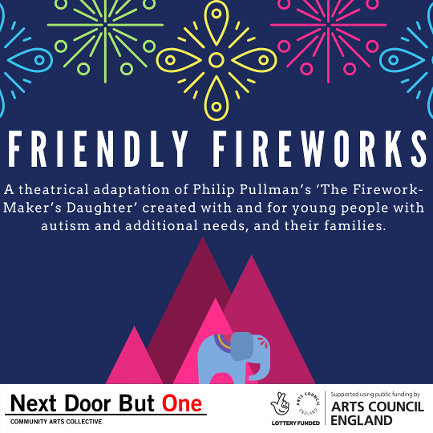
The participation within theatre can be complex for young people with autism and sensory needs. Will the sound and lighting create a sensory overload? Will there be a quiet space to go to if someone feels overwhelmed? Will the way in which the play is presented be ‘readable’? Does the young person know what to expect when going to the theatre?
And so many more questions.
Theatres are increasingly providing ‘relaxed performances’ specifically to accommodate those who may find the audience experience difficult or daunting, specifically for members with autism and learning disabilities. We very much applaud and are a part of this development, however with this comes the reinforcement of a space for disabled people and a space for non-disabled people; the full experience and an adapted version.
We have been given the rights by Phillip Pullman to adapt his sparkling novel, The Firework Maker's Daughter through an R&D process with young people with autism and their families.
Throughout 2019 and 2020 we have been running workshops on music, design, characterisation and storytelling with S.N.A.P.P.Y and Camphill Village Trust, funded by The Wharefdale Foundation, and now supported using public funding from Arts Council England we will be advancing with our research, creating a new script, with supporting material, and a scratch performance to trial with our target audiences.
Highlights from our current research can be found HERE
